How to back up and restore your Android phone or tablet
With the release of Android 7.0 Nougat, now is the perfect time to make sure you have a backup of your Android smartphone or tablet, as this means if you upgrade to Android 7.0 and something goes wrong - or you just don't like the new OS, then you can easily restore your Android device back to the way it was before the upgrade.
Android is tailor-made for syncing with cloud services, so wherever possible, use online services to back up important data such as emails, contacts and calendars. For example Gmail is a great service that makes backing up all of these from your Android device easy and straightforward.
On Android, the Google Sync feature will also back up contacts, email, calendar and bookmarks if you're using the default (or Google made) apps associated with each of these.
If your Android device is full of precious photos and home videos, then it is important to know how to make sure your phone or tablet is backed up correctly, so if anything happens to the device, you at least still have all your irreplaceable photos and videos.
Android can also back up a lot of critical app data — a feature that's gotten better over time — but it's not quite as thorough as what you'll see on iOS. In many cases this means when you need to restore Android from a backup, your apps and the data they contain, will be restored as well.
Because of this, it's best to take a two-pronged approach to backing up, so read on to find out how to back up and restore your Android phone or tablet.
Enabling backups on your Android phone or tablet
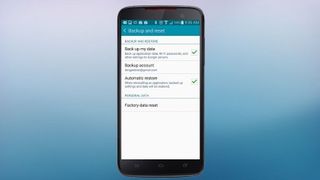
The first simple step is to enable Android's built-in backup feature, if you haven't already. To check, head into Settings > Backup and reset and make sure both 'Back up my data' as well as 'Automatic restore' are checked.
This will keep an automatic backup of your Android data and settings online and tied to a Gmail account. If you need to reset your Android device, or you buy a new one, then you can sign in with this Gmail account and your data and settings will be downloaded and restored. For more information on using a Gmail account check out our guide on how to use Gmail.
This is one of the easiest forms of Android backup, but for a more robust approach we want to use third party backup tools as well
How to back up photos on Android
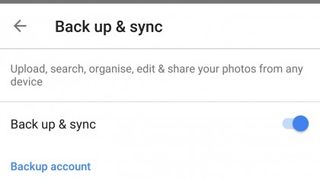
You probably take a lot of photos with your Android phone or tablet, so you'll want to make sure you take regular backups of the photos you store.
Android has an automatic backup feature for the photos you take, so to make sure that's enabled, open up the Photos app, then tap on the icon of three horizontal lines. On the menu that opens, tap on 'Settings' then select 'Backup & sync'.
Now make sure that the toggle next to where it says "Back up & sync" is enabled. From this menu you can also choose the quality that the photos are saved as when backed up, and whether or not to run the automatic backup using your mobile data. Remember if you choose this, you may go over your mobile data limit.
Use the Helium app to create an Android backup
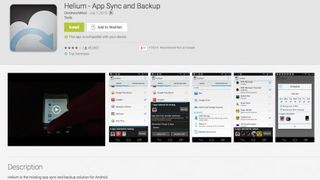
There are also a number of third party apps that can make creating a backup of your Android device nice and easy.
For example, install Helium from the Google Play Store. If your handset is rooted, just install the app and you're good to go. If not, there's a couple of additional steps required to give Helium the correct access it needs for backup.
The first of these is to enable USB debugging on your phone. Go to Settings > Developer Options > USB Debugging. If you can't see a 'Developer Options' entry, which is hidden by default on many handsets, go to Settings > About Phone and tap 'Build number' seven times to unhide the entry.
Next, download and install the Helium Desktop client on your computer. Launch it, then follow the instructions, plugging in your Android device via USB when prompted and launching the Helium app.
Helium: Setting it up
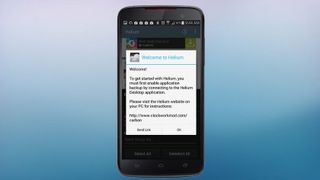
Once you've got Helium's access rights sorted, you can make backups (and restore them) from your Android phone or tablet's internal storage, or a microSD card, if your device has a slot. You can also copy these backups to your PC for safekeeping.
For ever better backup security, Helium will let you save backups directly to the cloud using Dropbox, Google Drive or Box — the caveat is that if you want to *restore* a cloud backup, you'll need to purchase the Premium version of Helium, which costs US$4.79 (£3.17). Google accounts all come with 15GB of free cloud storage on Google Drive, which should be enough for your app data.
Helium: Backing up app data
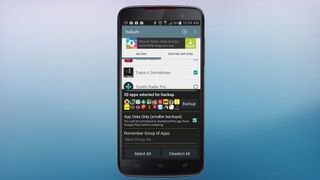
Backing up your Android device in Helium is a simple matter of selecting the apps you'd like to save data from (the little window that shows 'Buy premium' contains a list of all installed apps), then tapping 'Backup' and choosing a destination.
Unless you've got a humungous microSD card inside your device, we'd recommend leaving the default 'App Data Only (smaller backups)' option checked. If you uncheck this, Helium will back up a copy of the application (as an apk file) alongside the data — the only real reason for doing this full backup is if you want to avoid re-downloading an app from the Play Store.
Note that some app types, such as podcast players, often have large media files associated with them, which means they can take some time to back up — and will consume more storage space than most other apps.
So, select the individual apps you want to back up, or tap 'Select all' down the bottom to just do everything, then tap 'Backup', choose a destination (we've used 'Internal storage' here) and wait for the backup to complete.
Your backups are stored in a folder on storage device you've selected called 'carbon' — we'd recommend copy this to your PC for safekeeping, as it'll be deleted if you ever have to reset your phone.
Helium: Backing up to your computer
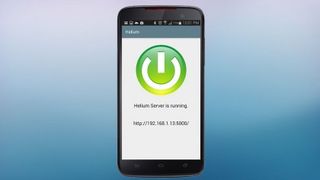
You can also back up your Android device directly to your PC or Mac. Tap the 'three dots' icon at the top right and then 'PC download'. Then, in your PC's web browser, type the address shown and you'll be given a web-based interface that mirrors what's on Android.
When you perform a backup this way, your browser with download and save a file called backup.zip, so place this somewhere safe.
Helium: Restoring from a backup
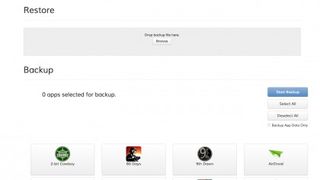
To restore an older backup, swipe right and tap on the storage location where your backup is saved. You'll be presented with a list of apps, which you can select from, or tap the blue box icon at the bottom left to show the 'Select all' button. When you're ready, tap Restore to recover the backed up data.
Note that if you want to delete the backup for a specific app, tap and hold on an app's entry in the list until you see a 'Delete Backup' prompt, then tap OK.
How to back up and restore your Android phone or tablet
![How to back up and restore your Android phone or tablet]() Reviewed by mosjoe
on
03:43
Rating:
Reviewed by mosjoe
on
03:43
Rating:

No comments: